Recent Articles
Popular Makes
Body Types
2018 BMW 4 Series Road Test and Review
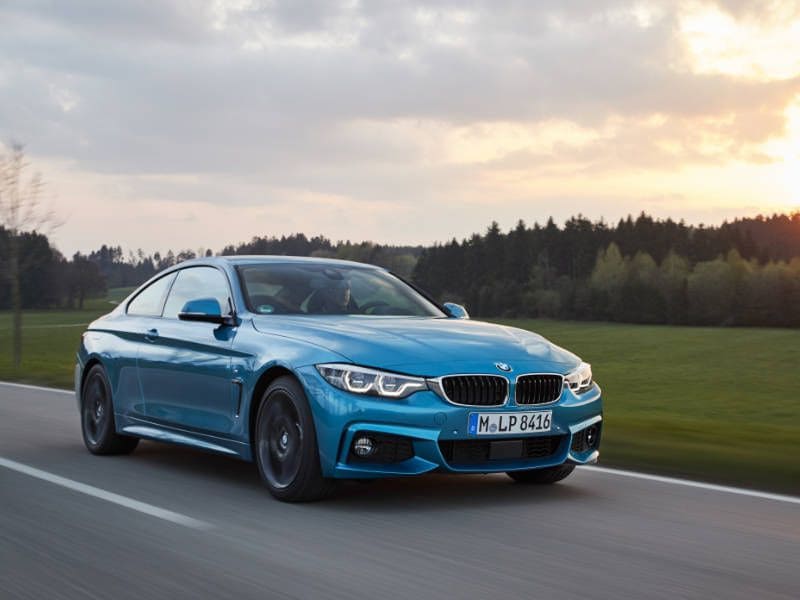
2018 BMW 4 Series front quarter driving ・ Photo by BMW
At full throttle, I wing past the diesel cargo van that had been clogging the fast lane and look down at the BMW’s speedometer. It reads 200 kilometers per hour. That’s 125 mph, a velocity I would never attempt on an American roadway. But this is Germany, and I’m taking full advantage of the Autobahn’s unlimited speed limits and the impressive high-speed stability of this 2018 BMW 4 Series. This is where German luxury cars really impress, and it’s that performance, combined with its beauty and comfort, which has made the 4 Series so popular in America.
In all its forms — coupe, convertible, and four-door Gran Coupe hatchback — the 4 Series is a consistent favorite in the extremely competitive small luxury segment. Updated for 2018, the 4 Series competes very successfully against the Lexus IS and RC, Mercedes-Benz C-Class, Audi A4 and A5, Cadillac ATS, Infiniti Q5 and Q60, Jaguar XE and the new Alfa Romeo Giulia.
Sedan, Coupe, or Convertible
Although based on the 3 Series, the 2018 BMW 4 Series costs about $10,000 more. The 4 Series coupe, convertible and the four-door Gran Coupe hatchback is offered in two trim levels: 430i and 440i. You can also get the coupe or convertible on the high-performance M4 model. Rear-wheel drive is standard, and you can add BMW’s xDrive all-wheel drive system for $2,000. Prices for a 430i coupe start at $44,295, including $995 for destination and handling, while the 430i Gran Coupe with four doors costs $200 less. The 430i convertible, featuring a power retractable hardtop, starts at $52,445.
Despite BMW offering hybrid and diesel versions of the 3 Series, the more expensive 4 Series only offers the brand’s tried-and-true turbocharged gasoline engines. Powering the 430i models is a 248-horsepower 2.0-liter four-cylinder engine, which is also used in the 2 Series and 3 Series. The 440i’s sweet 320-hp 3.0-liter inline six-cylinder engine also powers versions of the 3 Series and the 5 Series. Both engines partner with a six-speed manual transmission or the more popular eight-speed automatic with paddle shifters.
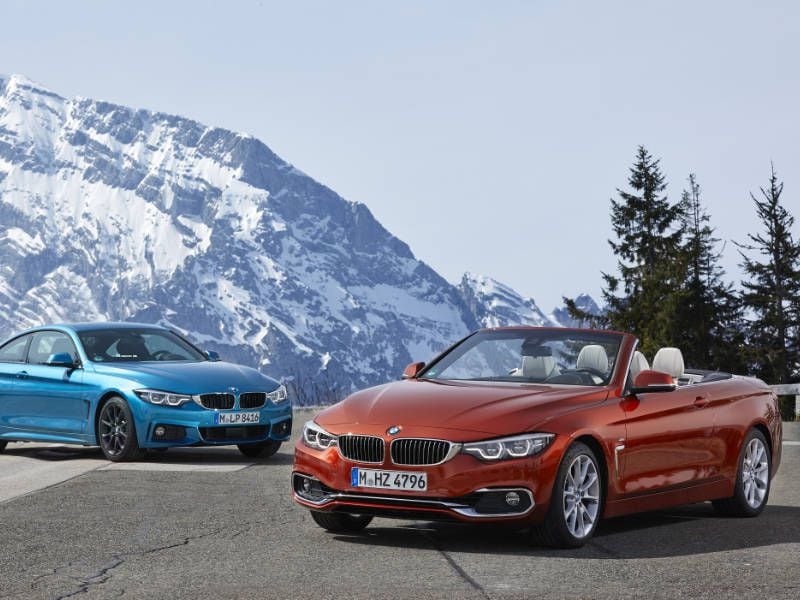
Photo by BMW
The M4 packs over 400 horsepower.
Think of the 2018 BMW M4 as the 4 Series that spends its days and nights in the gym. With well over 400 hp, it’s by far the best-performing member of the 4 Series family. It’s also the most expensive — prices start at $68,695 for the coupe and $77,195 for the convertible. Like other models from BMW's M performance division, the M4 also features more aggressive suspension tuning than other 4 Series trims, along with larger wheels and tires and bigger brakes.
Mechanical twins to the legendary M3 sedan, the M4 coupe and convertible are powered by a twin-turbocharged 3.0-liter six-cylinder engine making 425 hp, or 444 hp with an optional Competition Package. It’s backed by a six-speed manual transmission or a seven-speed dual clutch automatic that BMW only uses in its M cars. The combination gets the lighter coupe to 60 mph in less than 4 seconds, making it one of the quickest four-seaters around.
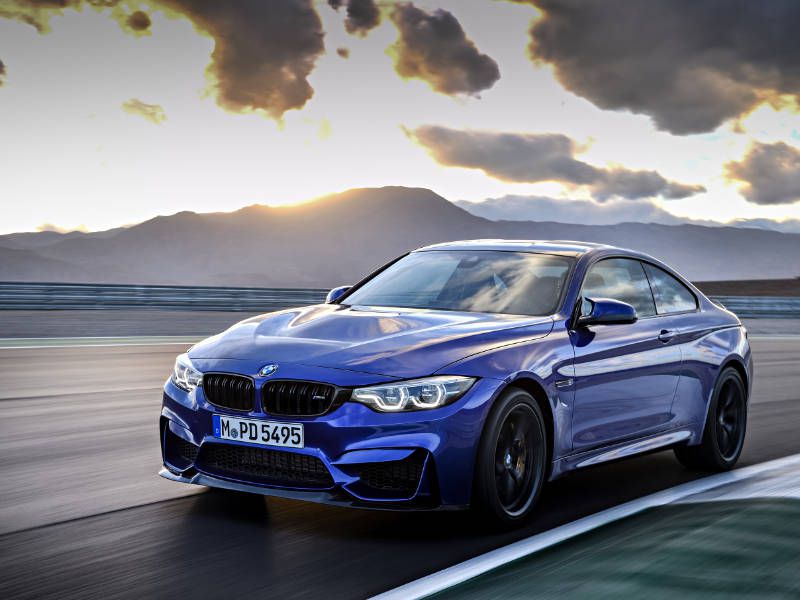
Photo by BMW
Sportier Drive than Before
With a lower center of gravity and slightly wider tracks than a 3 Series, this is a very responsive and fun-to-drive car. This year BMW tweaked the steering system for more feel and stiffened the suspension of the 4 Series for better handling. In Comfort mode, the ride still manages to be plush and the 4 Series is comfortable, refined and quiet. In Sport and Sport+ modes, which increases throttle response and retune the transmission for more aggressive shifting, the 4 Series really comes alive. Sport+ also stiffens the suspension for improved handling.
The turbocharged four-cylinder in our rear-wheel drive 430i coupe test vehicle is incredibly smooth even at its 7,200 rpm redline, and it makes enough power to reach 60 mph in just 5.5 seconds. The eight-speed automatic transmission provides firm and well-timed gear changes. Meanwhile, the more powerful 440i rockets to 60 mph in only 4.8 seconds — and with extra off-the-line traction from the available all-wheel drive, BMW says that number drops to 4.6 seconds. That’s quick enough to make your stomach jump, like when you were a kid riding those roller coasters at the fair.
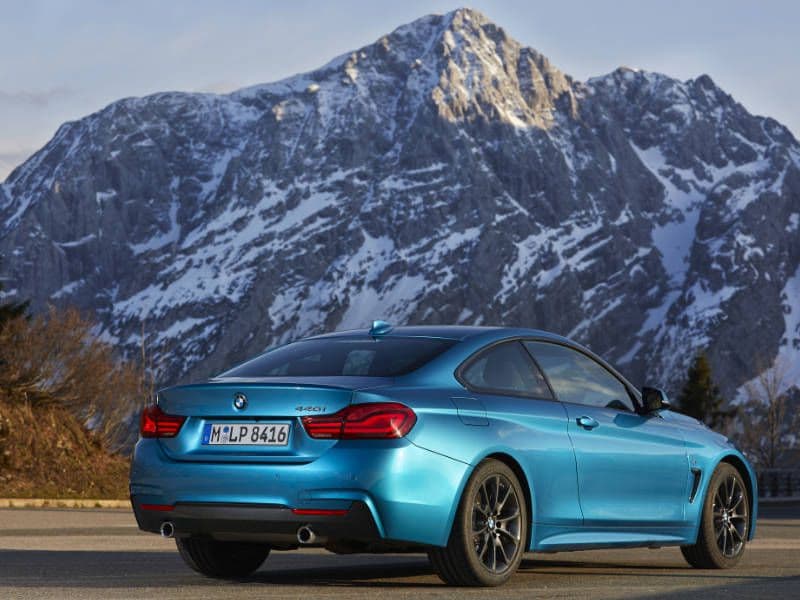
Photo by BMW
New, More Aggressive Design
BMW has also updated the styling of the 4 Series for 2018. Although the changes are subtle, and the overall shape debuted back in 2014, it looks fresh and ready to take on the all-new Audi A5. All models still benefit from athletic proportions, looking long, low and wide, but the Gran Coupe four-door is particularly attractive. It looks wider and lower than a 3 Series sedan (because it is), and it now makes up over 50 percent of 4 Series sales — no doubt due to its combination of utility and curb appeal.
Many of the new design bits are from the BMW Concept 4 Series that debuted on the auto show circuit back in 2012. They include reshaped LED headlamps and taillights, and the front end also gets more aggressive air openings to give the car an even lower and wider look than before. The new rear end is also more aggressive; designers have moved the reflectors higher up and reshaped the outer air vents to accentuate to BMW’s ample hips.
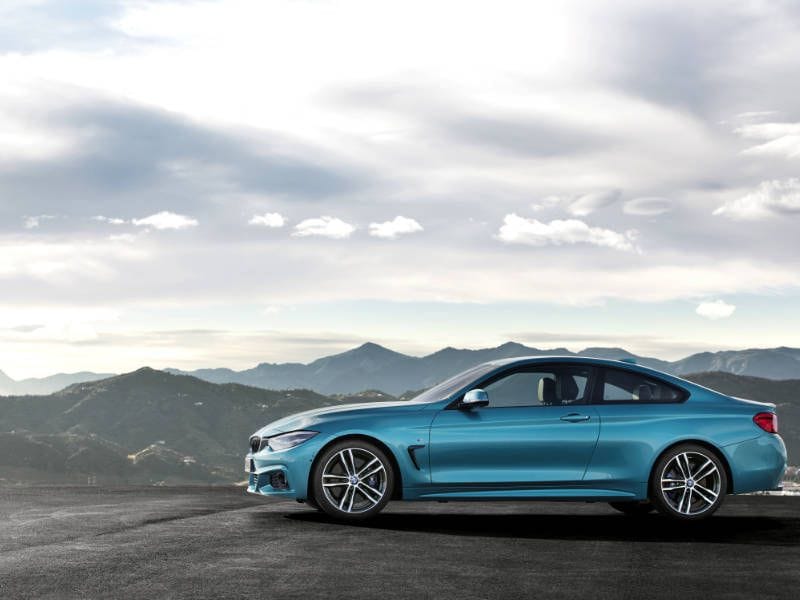
Photo by BMW
An Overall Feeling of Quality
Like its exterior, the inside of the 4 Series has been tweaked for the new year, with updated finishes including a high gloss panel on the console and double stitching on the dashboard. The steering wheel is also new, with a thicker rim and softer leather for a better grip. Our 430i coupe test vehicle certainly had an overall feeling of quality. Everything looks and feels expensive and there’s a large 6.5-inch screen in the center of the dash. You get the impression that the interior of the 4 Series will age well. Visibility is good, and the heated front seats in our test vehicle, while firm, were extremely comfortable.
Standard features include Bluetooth, power seats, a nine-speaker audio system and BMW's Driving Dynamics Control system, which features Eco Pro, Comfort, Sport and Sport+ settings. Onboard WiFi and wireless phone charging are also available, and BMW now offers its Multifunctional Instrument Display as an option on the 4 Series. It gives the driver a choice of displays depending on the driving experience mode selected.
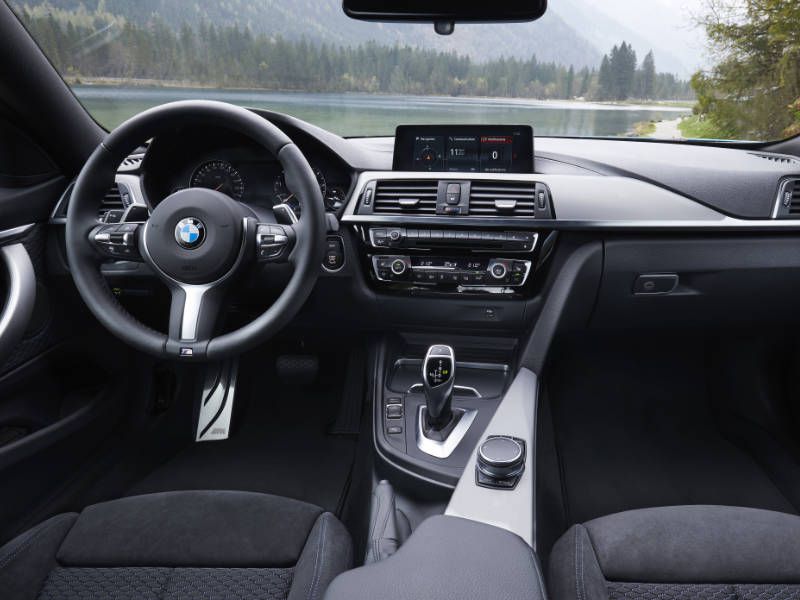
Photo by BMW
Large Trunk
With 17 cubic feet of cargo space, the 2018 4 Series Gran Coupe is the most road-trip-friendly. Plus it’s a hatchback and has a folding rear seat, which makes it easy to load large items like a bike. The 4 Series coupe offers 15.7 cubic feet of trunk space, which is also large for the class, and it too comes standard with a split folding rear seat. The convertible’s trunk is also relatively large at 13.1 cubic feet.
Unfortunately, the BMW’s interior storage is lacking. The center console bin is tiny, though the door pockets are large and have slots for water bottles. The two front seat cupholders aren’t huge, but they’re well placed so that tall drinks don’t interfere with any of the switchgear. There are also two rear seat cupholders.
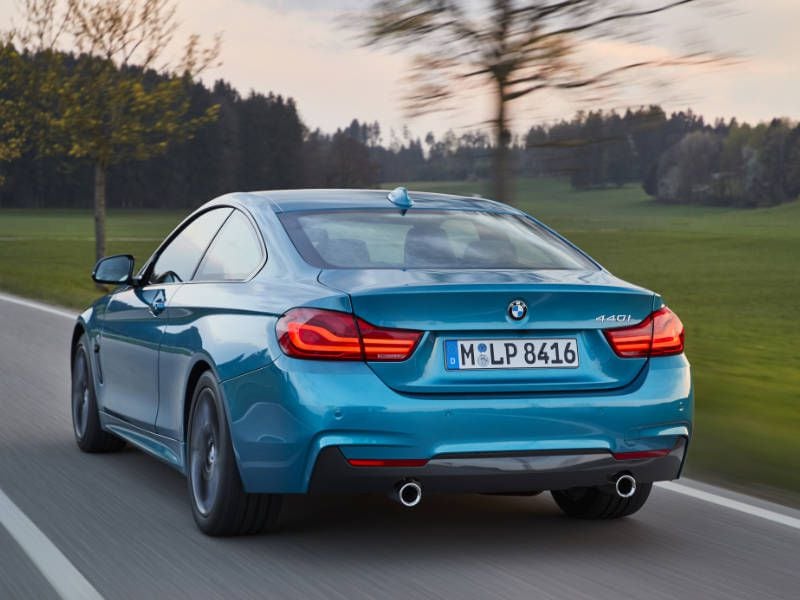
Photo by BMW
Family-Friendly Hatchback
With its larger trunk and four doors, the 4 Series Gran Coupe is quite family-friendly. Although some of its competitors — including the BMW 3 Series sedan or wagon — offer more rear seat room, the Gran Coupe seats five comfortably. Rear passengers can spread out and enjoy the rear air conditioning vents and adjustable headrests. Younger families will appreciate the BMW’s easy-to-reach LATCH connectors in the outboard seats. The 4 Series coupe and convertible only seat four and the back seats are tight. Their longer door can also be an issue in tight parking spaces.
Fuel economy is good for this class. The 430i is rated for up to 24 mpg city and 34 mpg highway, while the more powerful 440i has EPA estimates that reach to 21 mpg city and 32 mpg highway and the extra-muscular M4 is rated up to 17 mpg city and 26 mpg highway. The mileage does vary by a couple of miles per gallon on each version based on your selected body style, transmission and drive wheels.
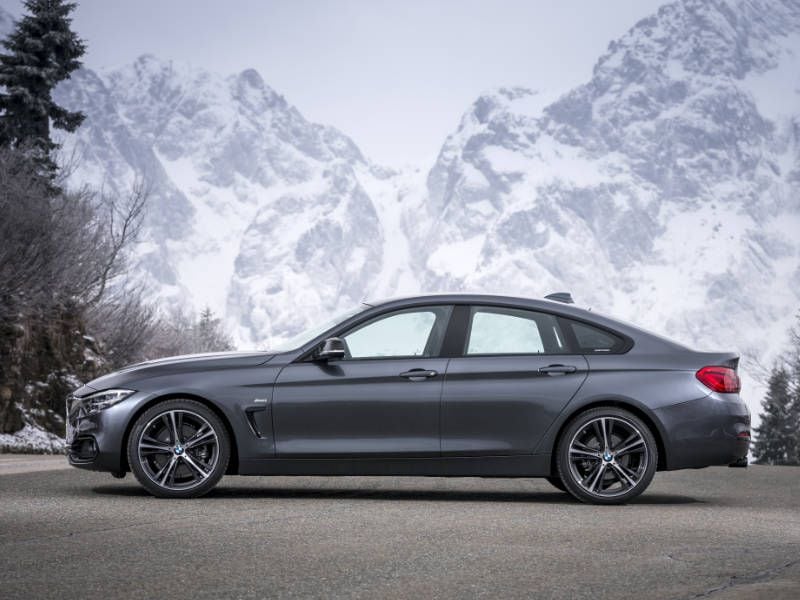
Photo by BMW
Advanced Safety Technology
Some safety systems that are standard on some of the 4 Series' competitors cost extra on the BMW. Options include Active Cruise Control, which will keep a safe distance from the vehicle ahead; a lane-departure warning; and a blind spot monitor. BMW also offers a pre-collision system with pedestrian detection that will automatically begin braking in a low-speed situation if the system believes an accident is imminent.
Other safety-related technology includes optional side- and top-view cameras that provide a detailed overhead view of the vehicle and its surroundings; a head-up display that projects the speedometer and other information on the windshield ahead of the driver; and parking assist sensors in the front and rear bumpers.
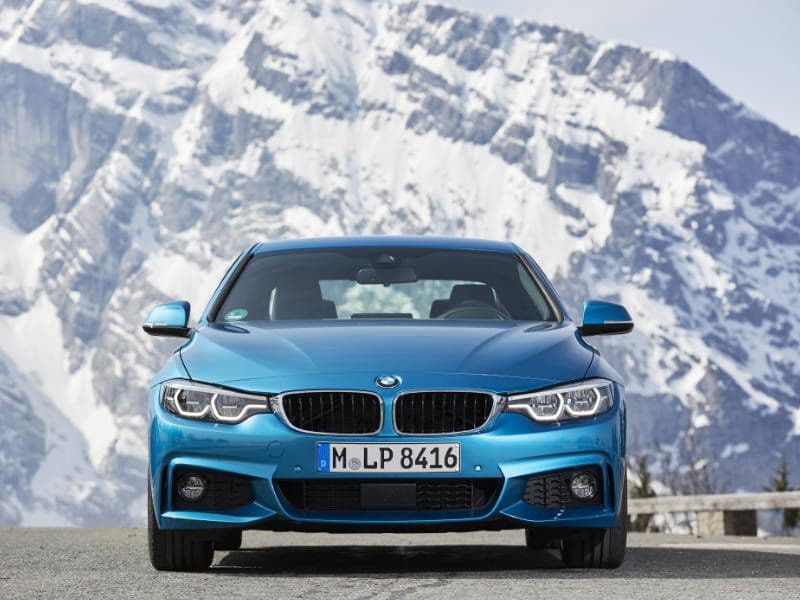
Photo by BMW
Get the 440i
Hardcore enthusiasts should go right for the M4, but the 440i is more than enough for most. Its increase in horsepower and features over the 430i is significant, and the penalty in fuel economy is small enough to keep your conscience clear. Although some safety technology and other features that are standard on other cars in the segment are extra-cost options on the BMW, the 4 Series makes up for that with a unique combination of luxury, performance, and style. Few cars this comfortable are also this fun to drive.
Overall, BMW has made just enough upgrades to an already proven and appealing package for the 2018 BMW 4 Series to remain near the top of our favorites list. Despite fierce competition, it continues to be a very desirable overall choice.
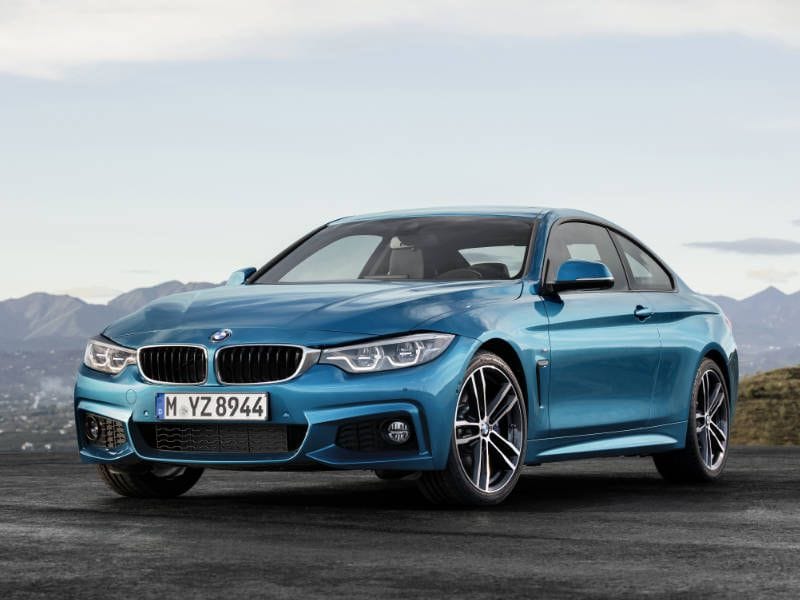
Photo by BMW